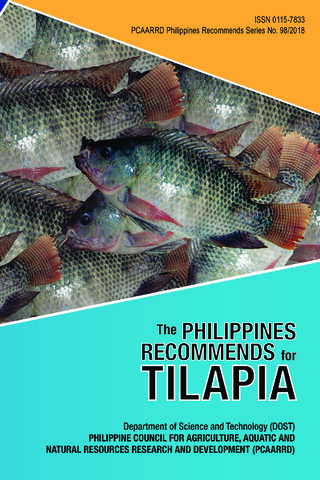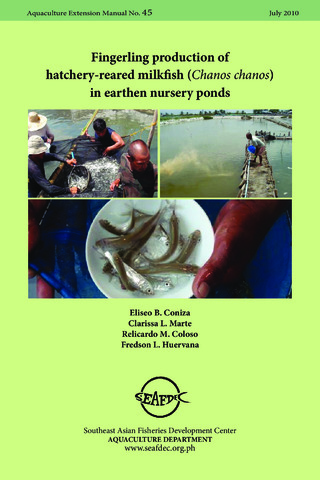Mangroves and shrimp pond culture effluents in Aklan, Panay Is., central Philippines
| dc.contributor.author | Primavera, Jurgenne | |
| dc.contributor.author | Altamirano, Jon | |
| dc.contributor.author | Lebata, M. J. H. L. | |
| dc.contributor.author | delos Reyes, Aurelio A., Jr. | |
| dc.contributor.author | Pitogo, C. L. | |
| dc.date.accessioned | 2014-05-20T06:21:43Z | |
| dc.date.available | 2014-05-20T06:21:43Z | |
| dc.date.issued | 2007 | |
| dc.identifier.citation | Primavera, J. H., Altamirano, J. P., Lebata, M. J. H. L., de los Reyes Jr., A. A., & Pitogo, C. L. (2007). Mangroves and shrimp pond culture effluents in Aklan, Panay Is., central Philippines. Bulletin of Marine Science, 80(3), 795-804. | en |
| dc.identifier.issn | 0007-4977 | |
| dc.identifier.uri | http://hdl.handle.net/10862/2067 | |
| dc.description.abstract | The capacity of a natural mangrove system in Ibajay, Aklan province, central Philippines to process shrimp pond culture effluents was assessed through analysis of mangrove community structure and 24-hr monitoring of water quality parameters (NH3-N, NO3-N, PO4-P, sulfide, and total suspended solids). Results from the latter showed decreased nutrient levels within 6 hrs after daytime draining of effluents into the mangrove stand, but only nitrate reduction was statistically significant. Based on nitrate loss, volume of water drained, mangrove area, and shrimp farming data (e.g., N loss from ponds, feed composition, feeding rate), calculations show that 1.8–5.4 ha of mangroves are required to remove nitrate wastes from 1 ha of shrimp pond. N uptake by the mangrove macroflora was supported by data showing longer nipa palm leaflets and faster mangrove seedling growth in the experimental mangrove receiving effluents compared to a control mangrove, but not from mangrove biomass measurements. These results have significant implications for the Philippine brackishwater pond culture industry to conserve or rehabilitate mangroves as potential pond biofilters, to implement legally mandated 20- and 50-m greenbelts, and to reverse the national 0.5 ha mangrove: 1.0 ha pond ratio. | en |
| dc.description.sponsorship | This study was funded by the Government of Japan Trust Fund for the Mangrove-Friendly Shrimp Culture Project. Grateful thanks are extended to Bugtong Bato, Ibajay Barangay Head N. Soliva for facilitating field arrangements, A. Traje for assistance in the pond and mangrove work, N. Kautsky and M. Beveridge for helpful comments on the manuscript, and J. Binas. | en |
| dc.language.iso | en | en |
| dc.publisher | University of Miami, Rosenstiel School of Marine and Atmospheric Science | en |
| dc.relation.uri | http://www.ingentaconnect.com/content/umrsmas/bullmar/2007/00000080/00000003/art00021 | |
| dc.subject | Penaeidae | en |
| dc.subject | Philippines | en |
| dc.title | Mangroves and shrimp pond culture effluents in Aklan, Panay Is., central Philippines | en |
| dc.type | Article | en |
| dc.citation.volume | 80 | |
| dc.citation.issue | 3 | |
| dc.citation.spage | 795 | |
| dc.citation.epage | 804 | |
| dc.citation.journalTitle | Bulletin of Marine Science | en |
| seafdecaqd.library.callnumber | VF SJ 0844 | |
| seafdecaqd.databank.controlnumber | 2007-09 | |
| dc.subject.asfa | aquaculture effluents | en |
| dc.subject.asfa | community composition | en |
| dc.subject.asfa | culture effects | en |
| dc.subject.asfa | mangroves | en |
| dc.subject.asfa | marine crustaceans | en |
| dc.subject.asfa | pond culture | en |
| dc.subject.asfa | ponds | en |
| dc.subject.asfa | shrimp culture | en |
| dc.subject.asfa | water pollution | en |
| dc.subject.asfa | water quality | en |
Files in this item
| Files | Size | Format | View |
|---|---|---|---|
|
There are no files associated with this item. |
|||
This item appears in the following Collection(s)
-
Journal Articles [1229]
These papers were contributed by Department staff to various national and international journals.




